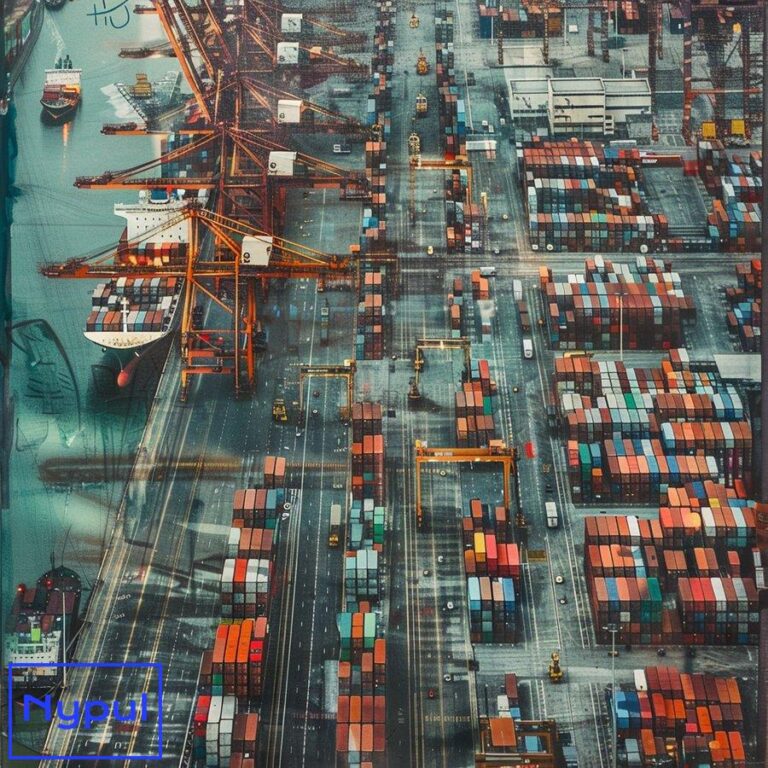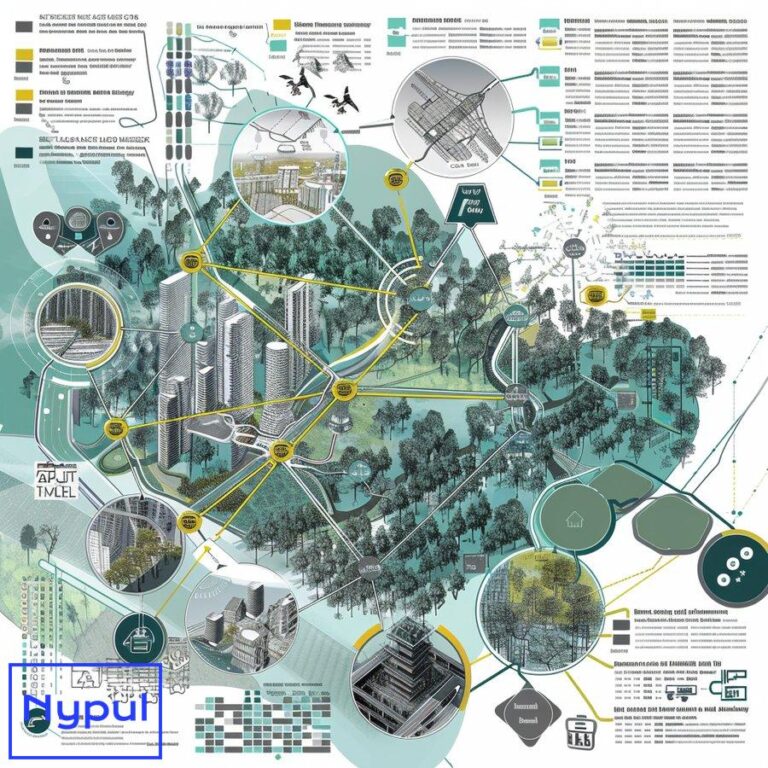What Is a Drayage Dispatcher
A drayage dispatcher plays a crucial role in the logistics and transportation industry, specifically in the realm of short-distance freight movement. These professionals are responsible for coordinating the transport of shipping containers between ports, rail yards, and nearby warehouses or distribution centers.
Drayage dispatchers serve as the vital link between shipping companies, truck drivers, and port or rail terminal operators. They ensure the smooth flow of goods within a localized area, typically within a 50-mile radius of a port or intermodal facility. Their primary focus is on managing the first or last leg of a container’s journey in the intermodal transportation process.
The term “drayage” originates from the historical use of horse-drawn carts called “drays” for short-distance transport. While the mode of transportation has evolved, the concept of short-haul freight movement remains central to drayage operations.
Key aspects of a drayage dispatcher’s role:
Coordination hub: Drayage dispatchers act as the central point of contact for all parties involved in the drayage process. They communicate with trucking companies, port authorities, customs officials, and warehouse managers to orchestrate the movement of containers.
Scheduling expert: These professionals are responsible for creating and managing efficient schedules for drayage truck drivers. They must consider factors such as port congestion, driver availability, and delivery deadlines to optimize the flow of containers.
Problem solver: Drayage dispatchers must be adept at handling unexpected issues that arise during the transport process. This may include rerouting trucks due to traffic or port delays, or finding alternative solutions when equipment malfunctions occur.
Compliance overseer: Ensuring that all drayage operations comply with local, state, and federal regulations is a critical aspect of the dispatcher’s role. This includes adhering to hours-of-service rules for drivers and maintaining proper documentation for customs clearance.
Technology utilizer: Modern drayage dispatchers leverage various software tools and platforms to manage operations efficiently. This may include transportation management systems (TMS), GPS tracking software, and electronic logging devices (ELDs).
To illustrate the typical daily interactions of a drayage dispatcher, consider the following table:
| Stakeholder | Nature of Interaction | Frequency |
|---|---|---|
| Truck Drivers | Assigning loads, providing route information, addressing issues | Multiple times daily |
| Port Authorities | Coordinating container pickup/drop-off, addressing documentation requirements | Daily |
| Shipping Companies | Confirming container details, scheduling pickups | Daily |
| Warehouse Managers | Arranging delivery times, confirming receipt of containers | Daily |
| Customs Officials | Ensuring proper documentation, addressing clearance issues | As needed |
Drayage dispatchers must possess a unique blend of skills to excel in their role. They need to be highly organized, able to multitask effectively, and have excellent communication abilities. A deep understanding of the local transportation landscape, including port operations and traffic patterns, is essential for success in this position.
As the demand for efficient supply chain management continues to grow, the role of drayage dispatchers becomes increasingly critical. These professionals play a key part in ensuring that goods move seamlessly from global shipping lanes to local distribution networks, contributing significantly to the overall efficiency of international trade.
What are the key responsibilities of a drayage dispatcher?
Drayage dispatchers shoulder a wide array of responsibilities that are crucial for the smooth operation of short-haul freight movement. Their duties extend beyond simple scheduling, encompassing various aspects of logistics management, customer service, and regulatory compliance. Let’s delve into the key responsibilities that define the role of a drayage dispatcher:
Load assignment and scheduling
Drayage dispatchers are tasked with efficiently assigning loads to available drivers. This process involves:
Driver matching: Pairing loads with appropriate drivers based on factors such as location, equipment type, and driver qualifications.
Route optimization: Determining the most efficient routes for drivers to minimize fuel consumption and delivery times.
Time management: Scheduling pickups and deliveries to maximize driver productivity while adhering to hours-of-service regulations.
Equipment allocation: Ensuring that the right type of chassis or container is available for each load.
Real-time monitoring and coordination
Dispatchers must maintain constant awareness of the status of all active shipments. This responsibility includes:
Tracking shipments: Using GPS and other tracking technologies to monitor the location and progress of each container.
Addressing delays: Quickly identifying and resolving issues that may cause delays in pickup or delivery.
Communicating updates: Keeping drivers, customers, and other stakeholders informed about the status of shipments.
Managing port and terminal operations: Coordinating with port authorities and terminal operators to facilitate smooth container movements.
Customer service and communication
Effective communication is at the heart of a drayage dispatcher’s role. Key aspects include:
Client liaison: Serving as the primary point of contact for customers, addressing inquiries and concerns.
Service updates: Providing timely updates to clients regarding their shipments, including estimated arrival times and any potential delays.
Issue resolution: Addressing and resolving customer complaints or service issues promptly and professionally.
Quote preparation: Assisting in the preparation of accurate quotes for drayage services when required.
Regulatory compliance and documentation
Ensuring adherence to various regulations is a critical responsibility. This involves:
Documentation management: Maintaining accurate records of all shipments, including bills of lading, customs documents, and delivery receipts.
Compliance oversight: Ensuring that all drayage operations comply with local, state, and federal regulations, including environmental and safety standards.
Customs coordination: Facilitating the customs clearance process by ensuring all necessary documentation is in order.
Driver management and support
Dispatchers play a crucial role in supporting and managing drayage truck drivers:
Driver briefing: Providing drivers with clear instructions regarding pickup and delivery details, including special handling requirements.
Performance monitoring: Tracking driver performance metrics and providing feedback for improvement.
Issue support: Assisting drivers with problems that arise during their routes, such as equipment failures or access issues at delivery locations.
Safety compliance: Ensuring drivers adhere to safety regulations and company policies.
Operational optimization
Drayage dispatchers contribute to the overall efficiency of the operation through:
Capacity utilization: Maximizing the use of available trucks and drivers to meet demand efficiently.
Cost control: Identifying opportunities to reduce operational costs without compromising service quality.
Performance analysis: Analyzing key performance indicators (KPIs) to identify areas for improvement in the drayage process.
Technology implementation: Recommending and implementing new technologies to enhance operational efficiency.
To illustrate the multifaceted nature of a drayage dispatcher’s responsibilities, consider the following table outlining a typical day’s tasks:
| Time | Task | Description |
|---|---|---|
| 6:00 AM | Daily planning | Review scheduled loads and driver availability for the day |
| 7:00 AM | Driver briefing | Communicate with drivers about their assigned loads and routes |
| 8:00 AM | Port coordination | Liaise with port authorities regarding container pickup schedules |
| 9:00 AM | Customer updates | Provide status updates to clients on active shipments |
| 10:00 AM | Issue resolution | Address any delays or problems that have arisen during morning operations |
| 11:00 AM | Documentation review | Ensure all necessary paperwork is in order for customs clearance |
| 1:00 PM | Performance monitoring | Review driver performance metrics and address any concerns |
| 2:00 PM | Schedule adjustments | Make necessary changes to the afternoon/evening schedule based on morning outcomes |
| 3:00 PM | Client communication | Respond to customer inquiries and prepare quotes for new business |
| 4:00 PM | End-of-day reporting | Compile daily performance reports and prepare for the next day’s operations |
The responsibilities of a drayage dispatcher are diverse and demanding, requiring a unique blend of skills and knowledge. These professionals must be adept at juggling multiple tasks, making quick decisions, and maintaining clear communication with various stakeholders. Their ability to efficiently manage these responsibilities directly impacts the success of drayage operations and, by extension, the broader supply chain.
What skills and qualifications are required for a drayage dispatcher?
Drayage dispatchers must possess a unique set of skills and qualifications to excel in their role. The demanding nature of the job requires a combination of technical knowledge, interpersonal skills, and industry-specific expertise. Here’s a comprehensive look at the essential skills and qualifications for aspiring drayage dispatchers:
Educational background
While a specific degree is not always mandatory, many employers prefer candidates with relevant educational qualifications:
Associate’s or Bachelor’s degree: Programs in logistics, supply chain management, transportation management, or business administration provide a solid foundation for the role.
Industry certifications: Certifications such as the Certified in Transportation and Logistics (CTL) or the Global Logistics Associate (GLA) can enhance a candidate’s credentials.
Technical skills
Proficiency in various technical areas is crucial for effective drayage dispatching:
Computer literacy: Strong skills in using Microsoft Office suite, particularly Excel for data analysis and scheduling.
Transportation Management Systems (TMS): Familiarity with TMS software is often required for managing shipments and coordinating logistics.
GPS and tracking technologies: Understanding of GPS systems and other tracking tools used in the transportation industry.
Electronic Logging Devices (ELDs): Knowledge of ELD systems for monitoring driver hours and compliance.
Data analysis: Ability to interpret and analyze transportation data to optimize operations.
Communication skills
Excellent communication is at the core of a dispatcher’s role:
Verbal communication: Clear and concise verbal skills for interacting with drivers, customers, and other stakeholders.
Written communication: Ability to compose clear emails, reports, and documentation.
Active listening: Skill in attentively listening to and understanding the needs of drivers and customers.
Multilingual abilities: Proficiency in multiple languages can be a significant asset, especially in diverse port environments.
Organizational and time management skills
Drayage dispatchers must be highly organized to manage multiple tasks efficiently:
Multitasking: Ability to handle multiple shipments, drivers, and issues simultaneously.
Prioritization: Skill in identifying and addressing the most critical tasks first.
Attention to detail: Meticulous focus on the numerous details involved in each shipment.
Time management: Efficient allocation of time to various responsibilities throughout the day.
Problem-solving and decision-making skills
Quick thinking and effective problem-solving are essential in the fast-paced world of drayage:
Analytical thinking: Ability to analyze complex situations and develop effective solutions.
Critical thinking: Skill in evaluating information from multiple sources to make informed decisions.
Adaptability: Flexibility to adjust plans quickly in response to unexpected changes or challenges.
Stress management: Capacity to remain calm and focused under pressure.
Industry-specific knowledge
A deep understanding of the transportation and logistics industry is crucial:
Drayage operations: Comprehensive knowledge of drayage processes, equipment, and terminology.
Port and terminal operations: Understanding of port procedures, documentation requirements, and terminal layouts.
Transportation regulations: Familiarity with local, state, and federal transportation regulations, including hours-of-service rules.
Customs and international trade: Basic knowledge of customs procedures and international shipping practices.
Interpersonal skills
Strong people skills are essential for managing relationships with various stakeholders:
Customer service orientation: Ability to provide excellent service and maintain positive client relationships.
Teamwork: Skill in collaborating effectively with colleagues, drivers, and external partners.
Conflict resolution: Capacity to mediate and resolve disputes between drivers, customers, or other parties.
Leadership: Ability to guide and motivate drivers and team members.
Physical and environmental considerations
While primarily an office-based role, certain physical and environmental factors may apply:
Extended hours: Ability to work long or irregular hours, including evenings and weekends, as drayage operations often run 24/7.
Office environment: Comfort with working in an office setting, often in a busy, high-pressure atmosphere.
Occasional field work: Willingness to visit port facilities or customer locations when necessary.
To illustrate the relative importance of these skills and qualifications, consider the following table:
| Skill/Qualification | Importance Level | Rationale |
|---|---|---|
| Communication skills | Critical | Essential for coordinating with multiple stakeholders |
| Technical proficiency | High | Necessary for efficient use of dispatch and tracking systems |
| Industry knowledge | High | Crucial for understanding and navigating drayage operations |
| Problem-solving skills | Critical | Vital for addressing the frequent challenges in drayage |
| Organizational skills | High | Important for managing multiple tasks and priorities |
| Educational background | Moderate | Helpful, but experience often valued more highly |
| Interpersonal skills | High | Essential for maintaining relationships with drivers and clients |
| Stress management | Critical | Necessary for functioning effectively in a high-pressure environment |
The ideal drayage dispatcher possesses a blend of these skills and qualifications, allowing them to navigate the complex world of short-haul freight movement efficiently. While some skills can be developed on the job, a strong foundation in logistics, communication, and problem-solving is essential for success in this demanding role. As the drayage industry continues to evolve, dispatchers must also be committed to ongoing learning and adaptation to new technologies and practices.
How do drayage dispatchers use technology in their work?
Technology plays a pivotal role in modern drayage operations, and dispatchers rely heavily on various technological tools to perform their duties efficiently. The integration of advanced software and hardware solutions has revolutionized the way drayage dispatchers manage shipments, communicate with stakeholders, and optimize operations. Here’s an in-depth look at how drayage dispatchers leverage technology in their daily work:
![]()
Transportation Management Systems (TMS)
TMS software is the backbone of drayage dispatch operations:
Shipment tracking: Real-time visibility into the location and status of all active shipments.
Load planning: Automated tools for assigning loads to drivers based on various parameters such as location, equipment type, and driver availability.
Route optimization: Algorithms that calculate the most efficient routes, considering factors like traffic, port congestion, and delivery windows.
Document management: Digital storage and retrieval of essential documents such as bills of lading, proof of delivery, and customs paperwork.
Performance analytics: Tools for analyzing key performance indicators (KPIs) to identify areas for operational improvement.
GPS tracking and telematics
Advanced tracking technologies provide dispatchers with crucial real-time information:
Vehicle location: Continuous updates on the exact location of drayage trucks.
ETA calculations: Accurate estimates of arrival times based on current location and traffic conditions.
Geofencing: Automated alerts when trucks enter or exit predefined geographical areas, such as ports or customer locations.
Driver behavior monitoring: Insights into driving patterns to ensure safety and compliance with company policies.
Mobile applications
Specialized mobile apps facilitate seamless communication between dispatchers and drivers:
Load assignment: Instant notification to drivers about new assignments and route details.
Status updates: Ability for drivers to provide real-time updates on pickup, delivery, and any issues encountered.
Document capture: Tools for drivers to scan and upload important documents directly from their smartphones.
Two-way messaging: Secure platform for direct communication between dispatchers and drivers.
Electronic Logging Devices (ELDs)
ELDs are crucial for ensuring compliance with hours-of-service regulations:
Automated time tracking: Accurate recording of driver work hours and driving time.
Compliance alerts: Notifications to dispatchers when drivers are approaching their maximum allowed hours.
Data integration: Seamless transfer of driver log data to the TMS for comprehensive record-keeping.
Port and terminal management systems
Integration with port systems streamlines the drayage process:
Appointment scheduling: Direct access to port appointment systems for efficient container pickup and drop-off.
Container tracking: Real-time updates on container availability and location within the port.
Documentation exchange: Electronic submission and retrieval of necessary customs and port documentation.
Artificial Intelligence (AI) and Machine Learning (ML)
Emerging AI and ML technologies are enhancing drayage dispatch operations:
Predictive analytics: Forecasting potential delays or issues based on historical data and current conditions.
Dynamic routing: Real-time route adjustments based on changing traffic patterns and port conditions.
Automated decision-making: AI-powered suggestions for optimal load assignments and scheduling.
Customer relationship management (CRM) systems
CRM tools help dispatchers manage client interactions effectively:
Contact management: Centralized database of customer information and communication history.
Service tracking: Detailed records of all services provided to each client.
Automated notifications: Scheduled updates to clients about shipment status and any potential issues.
Business intelligence tools
Advanced analytics platforms provide insights for strategic decision-making:
Data visualization: Interactive dashboards for visualizing key operational metrics.
Trend analysis: Tools for identifying long-term trends in drayage operations and customer demands.
Scenario planning: Capabilities for modeling different operational scenarios to optimize resource allocation.
To illustrate the impact of these technologies on drayage dispatch operations, consider the following table:
| Technology |Technology | Benefits | Impact on Operations |
|—————–|————–|————————–|
| Transportation Management Systems (TMS) | Streamlines load planning and tracking | Increases efficiency and reduces errors |
| GPS Tracking and Telematics | Provides real-time vehicle location and ETA calculations | Enhances visibility and improves decision-making |
| Mobile Applications | Facilitates communication and document management | Increases responsiveness and driver satisfaction |
| Electronic Logging Devices (ELDs) | Ensures compliance with hours-of-service regulations | Reduces risk of violations and enhances safety |
| Port and Terminal Management Systems | Streamlines port operations and documentation exchange | Minimizes delays and improves turnaround times |
| Artificial Intelligence (AI) and Machine Learning (ML) | Enables predictive analytics and dynamic routing | Optimizes operations and reduces costs |
| Customer Relationship Management (CRM) Systems | Manages client interactions and service tracking | Enhances customer satisfaction and retention |
| Business Intelligence Tools | Provides insights for strategic decision-making | Supports long-term planning and operational improvements |
The integration of these technologies has transformed the role of drayage dispatchers, allowing them to operate more efficiently, make informed decisions, and enhance overall service quality. As technology continues to advance, drayage dispatchers must stay abreast of new tools and trends to maintain a competitive edge in the logistics industry.
What industry-specific knowledge is essential for drayage dispatchers?
To excel as a drayage dispatcher, professionals must possess a deep understanding of various industry-specific knowledge areas. This expertise enables them to navigate the complexities of short-haul freight movement effectively. Here are the critical domains of knowledge that drayage dispatchers should master:
Understanding drayage operations
A comprehensive grasp of drayage processes is fundamental:
Definition of drayage: Knowledge of the short-distance transport of shipping containers between ports, rail yards, and warehouses.
Types of drayage: Familiarity with different types of drayage services, including port-to-port, port-to-warehouse, intermodal drayage, and dedicated drayage.
Equipment used: Understanding the various types of equipment involved in drayage, such as chassis, containers, trucks, and forklifts.
Operational workflows: Knowledge of the end-to-end workflow involved in drayage operations, from container pickup to delivery.
Port operations
Drayage dispatchers must be well-versed in port procedures:
Port structure: Familiarity with the layout of ports, including terminals, loading docks, and customs areas.
Container handling processes: Understanding how containers are loaded, unloaded, and stored at ports.
Appointment scheduling: Knowledge of how to schedule appointments for container pickups or drop-offs at port facilities.
Customs clearance procedures: Awareness of the documentation required for customs clearance and how to facilitate this process effectively.
Regulatory compliance
Compliance with regulations is critical in the transportation industry:
Transportation regulations: Familiarity with local, state, and federal transportation laws governing hours-of-service, weight limits, safety standards, and environmental regulations.
Customs regulations: Understanding customs requirements for international shipments, including tariffs, duties, and documentation.
Safety regulations: Knowledge of safety protocols for drivers and equipment to ensure compliance with Occupational Safety and Health Administration (OSHA) standards.
Environmental considerations: Awareness of regulations regarding emissions and environmental impact related to transportation activities.
Logistics principles
A solid foundation in logistics principles is essential for effective dispatching:
Supply chain management: Understanding how drayage fits into the broader supply chain context.
Inventory management: Knowledge of inventory control practices relevant to warehousing and distribution.
Freight rates: Familiarity with pricing structures for drayage services, including factors that influence rates such as distance, container type, and market demand.
Customer service principles
Exceptional customer service is vital in maintaining client relationships:
Client communication: Skills in effectively communicating with clients regarding shipment status, delays, or issues.
Problem resolution: Ability to address customer complaints or concerns promptly while maintaining professionalism.
Service level agreements (SLAs): Understanding SLAs that define performance expectations between service providers and customers.
To illustrate the importance of these knowledge areas for a drayage dispatcher’s role, consider the following table:
| Knowledge Area | Importance Level | Rationale |
|---|---|---|
| Drayage operations | Critical | Essential for managing day-to-day activities effectively |
| Port operations | High | Necessary for coordinating container movements at ports |
| Regulatory compliance | Critical | Vital for avoiding legal issues and ensuring safe operations |
| Logistics principles | High | Important for understanding supply chain dynamics |
| Customer service principles | High | Key to maintaining positive client relationships |
Mastering these industry-specific knowledge areas equips drayage dispatchers with the tools they need to navigate the complexities of their role successfully. As they deepen their understanding of these topics, they enhance their ability to optimize operations, improve customer satisfaction, and contribute positively to their organization’s success.
How do drayage dispatchers handle common challenges?

The role of a drayage dispatcher is fraught with challenges that require quick thinking, problem-solving skills, and adaptability. These professionals must navigate various obstacles daily while ensuring the efficient movement of goods. Here are some common challenges faced by drayage dispatchers along with strategies for overcoming them:
Port congestion
Port congestion is a frequent issue that can disrupt schedules:
-
Monitoring traffic conditions: Dispatchers utilize real-time traffic data to anticipate congestion patterns at ports.
-
Flexible scheduling: Developing contingency plans allows dispatchers to adjust pickup times or routes based on current conditions.
-
Communication with stakeholders: Keeping drivers informed about potential delays helps manage expectations.
Equipment availability
Limited availability of equipment can hinder operations:
-
Inventory management systems: Implementing systems that track equipment availability ensures optimal utilization.
-
Proactive maintenance schedules: Regular maintenance checks on equipment help prevent breakdowns that can lead to shortages.
-
Alternative sourcing options: Establishing relationships with multiple equipment providers allows dispatchers to secure additional resources when needed.
Driver shortages
A shortage of qualified drivers can complicate logistics:
-
Recruitment strategies: Developing attractive compensation packages can help attract new drivers.
-
Retention initiatives: Fostering a positive work environment contributes to driver satisfaction and retention.
-
Training programs: Offering training opportunities helps develop new drivers from within the organization.
Regulatory compliance
Navigating complex regulations can be challenging:
-
Staying informed: Regularly reviewing updates on transportation laws ensures compliance with current regulations.
-
Documentation management systems: Utilizing digital tools helps maintain accurate records necessary for compliance.
-
Staff training programs: Providing ongoing education on regulatory requirements keeps all team members informed.
Communication breakdowns
Ineffective communication can lead to misunderstandings:
-
Centralized communication platforms: Implementing tools that facilitate real-time communication among all stakeholders minimizes miscommunication.
-
Regular check-ins: Scheduling routine meetings ensures everyone stays informed about operational changes or challenges.
-
Feedback mechanisms: Encouraging feedback from drivers helps identify communication gaps that need addressing.
To illustrate how dispatchers address these challenges effectively, consider the following table outlining common challenges alongside their corresponding solutions:
| Challenge | Solution |
|---|---|
| Port congestion | Monitor traffic; flexible scheduling; stakeholder communication |
| Equipment availability | Track inventory; proactive maintenance; alternative sourcing |
| Driver shortages | Attractive recruitment; retention initiatives; training programs |
| Regulatory compliance | Stay informed; document management systems; staff training |
| Communication breakdowns | Centralized platforms; regular check-ins; feedback mechanisms |
By proactively addressing these common challenges through strategic planning and effective communication, drayage dispatchers can ensure smoother operations. Their ability to adapt quickly fosters resilience within logistics networks while enhancing overall efficiency.
What career growth opportunities exist for drayage dispatchers?
The field of logistics offers numerous career growth opportunities for dedicated professionals. Drayage dispatchers can leverage their experience and skills to advance within the industry. Here are some potential career paths available for those looking to grow beyond their current roles:

Senior dispatcher roles
With experience comes the opportunity for advancement into senior dispatcher positions. Responsibilities may include:
-
Overseeing a team of dispatchers.
-
Managing more complex logistics operations.
-
Developing strategies for improving overall efficiency within the organization.
Operations manager
Transitioning into an operations manager role allows individuals to take on broader responsibilities within logistics. Key aspects may include:
-
Coordinating all aspects of transportation operations.
-
Managing budgets and resource allocation.
-
Implementing process improvements across departments.
Logistics coordinator or manager
Moving into logistics coordination or management provides an opportunity to oversee entire supply chain processes. Responsibilities may include:
-
Collaborating with various stakeholders across supply chains.
-
Analyzing data to optimize logistics strategies.
-
Ensuring compliance with industry regulations throughout all operations.
Specialized roles in technology or analytics
As technology continues transforming logistics practices, opportunities arise in specialized fields such as data analytics or transportation technology. Positions may involve:
-
Utilizing data analysis tools to improve operational efficiency.
-
Implementing new technologies within logistics networks.
-
Conducting research on emerging trends impacting transportation practices.
Entrepreneurial ventures
Experienced dispatchers may choose to start their own businesses within the logistics sector. Opportunities include:
-
Launching a freight brokerage firm specializing in drayage services.
-
Offering consulting services focused on optimizing supply chain processes.
-
Developing software solutions tailored specifically for drayage operations.
To illustrate potential career paths available after serving as a drayage dispatcher consider this table outlining various roles along with their primary responsibilities:
| Career Path | Primary Responsibilities |
|---|---|
| Senior Dispatcher | Team oversight; complex logistics management |
| Operations Manager | Budget management; process improvement |
| Logistics Coordinator/Manager | Supply chain collaboration; data analysis |
| Technology/Analytics Specialist | Data utilization; technology implementation |
| Entrepreneur | Business development; consulting services |
The career trajectory for a drayage dispatcher is promising due largely to increasing demand within logistics industries globally. By pursuing further education or certifications while gaining diverse experiences through various roles in transportation sectors professionals can position themselves favorably for advancement opportunities ahead!
How do drayage dispatchers impact supply chain efficiency?
Drayage dispatchers play an integral role in enhancing supply chain efficiency by ensuring smooth transitions between different modes of transportation. Their ability to coordinate activities effectively has far-reaching implications across entire supply chains. Here’s an exploration into how these professionals contribute significantly towards optimizing overall efficiency within logistical networks:

Streamlined Operations
Drayage dispatchers facilitate seamless movement between ports/terminals & warehouses through effective coordination efforts which lead directly towards streamlined operations through several means including:
- Load Optimization:
-
Efficiently assigning loads based on proximity & driver availability maximizes resource utilization while minimizing empty miles traveled by trucks leading towards reduced operational costs over time.
-
Real-Time Monitoring:
-
Continuous tracking capabilities enable swift identification & resolution regarding delays or disruptions thereby minimizing downtime associated with unexpected issues arising during transport processes ultimately enhancing productivity levels across networks involved throughout supply chains overall!
-
Effective Communication:
- Maintaining clear lines of communication among stakeholders ensures everyone remains informed about shipment statuses leading towards quicker decision-making processes which ultimately enhances responsiveness levels throughout logistical networks involved!
Cost Reduction
By optimizing routes & managing resources effectively through advanced technological solutions utilized by modern-day dispatchers significant cost savings can be achieved across entire logistical frameworks including but not limited too;
- Fuel Efficiency:
-
Route optimization techniques employed by experienced professionals result directly into reduced fuel consumption resulting from shorter distances traveled thus lowering overall expenses associated with transportation activities undertaken daily!
-
Reduced Labor Costs:
-
Efficient scheduling practices minimize idle time experienced by drivers leading towards improved labor productivity levels while simultaneously reducing overtime costs incurred during peak periods when demand surges unexpectedly arises!
-
Minimized Delays:
- Proactive measures taken against potential bottlenecks ensure timely deliveries are maintained thus avoiding costly penalties associated with late shipments impacting customer satisfaction negatively!
Enhanced Customer Satisfaction
Customer satisfaction remains paramount within competitive markets today where timely deliveries often dictate success levels achieved by organizations involved throughout various sectors including retail & manufacturing alike! Drayage dispatchers directly influence this aspect through;
- Timely Deliveries:
-
By ensuring prompt pick-ups/drop-offs occur per schedule commitments made customers experience improved reliability levels leading towards enhanced trust built over time benefiting long-term relationships established between parties involved!
-
Transparent Communication:
-
Providing regular updates regarding shipment statuses fosters transparency which ultimately leads customers feeling valued thereby enhancing overall satisfaction levels experienced throughout engagements undertaken mutually!
-
Personalized Services:
- Understanding unique needs/preferences exhibited by individual clients allows tailored solutions being offered resulting into increased loyalty exhibited amongst clientele who appreciate personalized attention received during engagements undertaken mutually!
Data Utilization
Leveraging data analytics enables insightful decision-making processes driven directly from information gathered during daily operations conducted routinely! Dispatchers utilize this information effectively leading towards;
- Performance Metrics Analysis:
-
Tracking key performance indicators (KPIs) allows identification areas requiring improvement thus enabling targeted efforts aimed at optimizing specific aspects contributing towards overall efficiency levels achieved across networks involved!
-
Predictive Analytics Implementation:
-
Utilizing historical data trends facilitates forecasting potential issues before they arise allowing preemptive measures being taken thereby minimizing disruptions experienced during transport processes ultimately enhancing reliability exhibited throughout engagements undertaken mutually!
-
Resource Allocation Optimization:
- Analyzing patterns observed enables better allocation resources based upon demand fluctuations ensuring adequate supplies remain available during peak periods experienced without incurring unnecessary costs associated excess inventory held unnecessarily over extended periods!
In summary,drygage dispatchers serve as pivotal players within logistical frameworks impacting supply chain efficiency significantly through streamlined operations,cost reduction measures implemented,enriched customer satisfaction levels achieved via transparent communications,data utilization practices employed strategically aimed at optimizing performance metrics observed routinely! Their contributions extend far beyond mere coordination efforts undertaken daily—they fundamentally shape how goods move seamlessly across intricate networks connecting producers consumers alike!
This comprehensive understanding highlights just how vital these professionals truly are when it comes ensuring smooth functioning modern-day global economies reliant upon efficient supply chains operating effectively!






